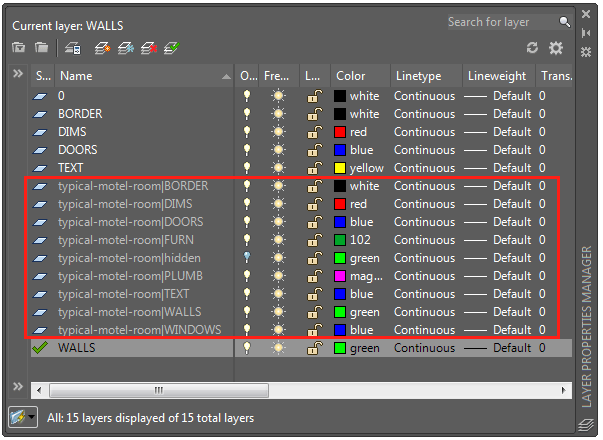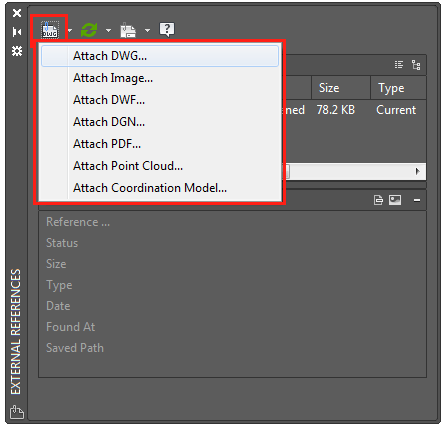
And that is without the model, views and layouts.Įven if I do some heavy cleaning from the dwgs (which is always risky because you could be trowing away the baby with the water) it still would take many minutes to save and easily reach critical file dimensions. dwg via xref, with 1mb each (which are not big drawings) it would take me at least 10 minutes to save or open, and would weight some 500mb at least. I can only extrapolate, but if I attached a hundred. If I deactivate saving compression, it baloons to 45 mb without significant performance improvement while saving. dwg, it took 5 seconds to save.Īfter attaching another 1mb. Before attaching anything, it saved in about one second.Īfter attaching via xref a 1 mb. I just did a simple experience, with a 1.5mb.

The more Xrefs I have on a single file, the slower (and bigger) it gets. You have to teach me how you do that Matthew, because my results are totally different. This is a trivial issue for me as I am constantly changing references anyway between floor plans, RCPs, structural plans, steel shop drawings, etc so changing references is just part of my accustomed workflow. With Miguel's method the floor plan overlay will change with each story. The only drawback that I have found to this method is that the background remains the same when you switch stories in the floor plan view so you also have to switch the reference.

On some of my larger projects I'm sure I have well over a hundred such worksheets. This works just as well for placed drawings as for xRefs.Īs far as performance goes I have created many worksheet references like this with no noticeable performance hit. I prefer to open the file in AutoCAD and adjust the layer states there. Layer control is not a big issue to me in either placed or xRef'd drawings since I don't like managing all those AutoCAD layers in ArchiCAD. With placed drawings it only finds the extents of the drawing. The main advantage I find to xRefs is that you can spacebar click (magic wand) the entities in the drawing. I use the Worksheet method and have placed, xRef'd and imported all manner of drawings (DWG, DWF, PDF, etc.) I mostly use placed drawings (even set a hot key for it) as it is the least hassle and works for all file types. So, in essence, you get all the advantages of the Xref and the hotlink modules. You can do this in the first file (the one that has the dwgs xrefed), simply by "Binding" the xref and changing the drawing.
#Xref autocad full
2d drawings tend to take resources from your system.Ĭ- Updating external drawings remains very easy, because they are xrefs anyway to the first file.ĭ- You may want to get inventive and tweak the original drawings (eliminate unwanted layers full of trees and such). There are a number of advantages to this method, namely:Ī- As drawings are Hotlinked (and not Xrefed) on your modeling file, you get a master layer to control each drawing visibility.ī- When the file starts to get slow and heavy, you just deactivate the hotlinked floors you are not needing at that point. If you are dealing with a large amount of 2d floor plans, or if you expect some updating to those, my advice is:ġ- Take a empty file and create as many floors as drawings.Ģ- Xref the drawings into the empty file, one for each floor.ģ- Create the same number of extra floors on your main file (hide them in sections and elevations) over you modeling floors.Ĥ- Hotlink the floors from the first file into the modeling file, floor by floor.

The 2D you get are messy, and you want control over their layer visibility. I wonder which one uses more resources to process, and leads to a bigger file size? I would imagine Xrefs are more intensive.Ĭan anyone think of other issues? I'm trying to anticipate pitfalls before I reference a whole bunch of plans into a large building model, and wish I did it another way.įor the purposes you mention, I would never use External Drawings. Xrefs have very little control, other than Unloading and changing the file reference. You can also crop Drawings, add them to Layouts, and adjust scale, color/pen set, and overall layer. in the drawing), while Drawings bypass all of that and show everything, which is generally simpler. I think it's now a common and recommended practice to import these onto a Worksheet, where they can be used as an overlay, correct?įrom what I can tell, it seems the main difference is that X-refs bring in layer information, which can be turned on and off (nice if you have ceilings, annotation, etc. I'd like to expand the discussion on this: When importing DWG as-built or background drawings on which to start your model, what are the pros and cons of "Place External Drawing" vs.


 0 kommentar(er)
0 kommentar(er)
